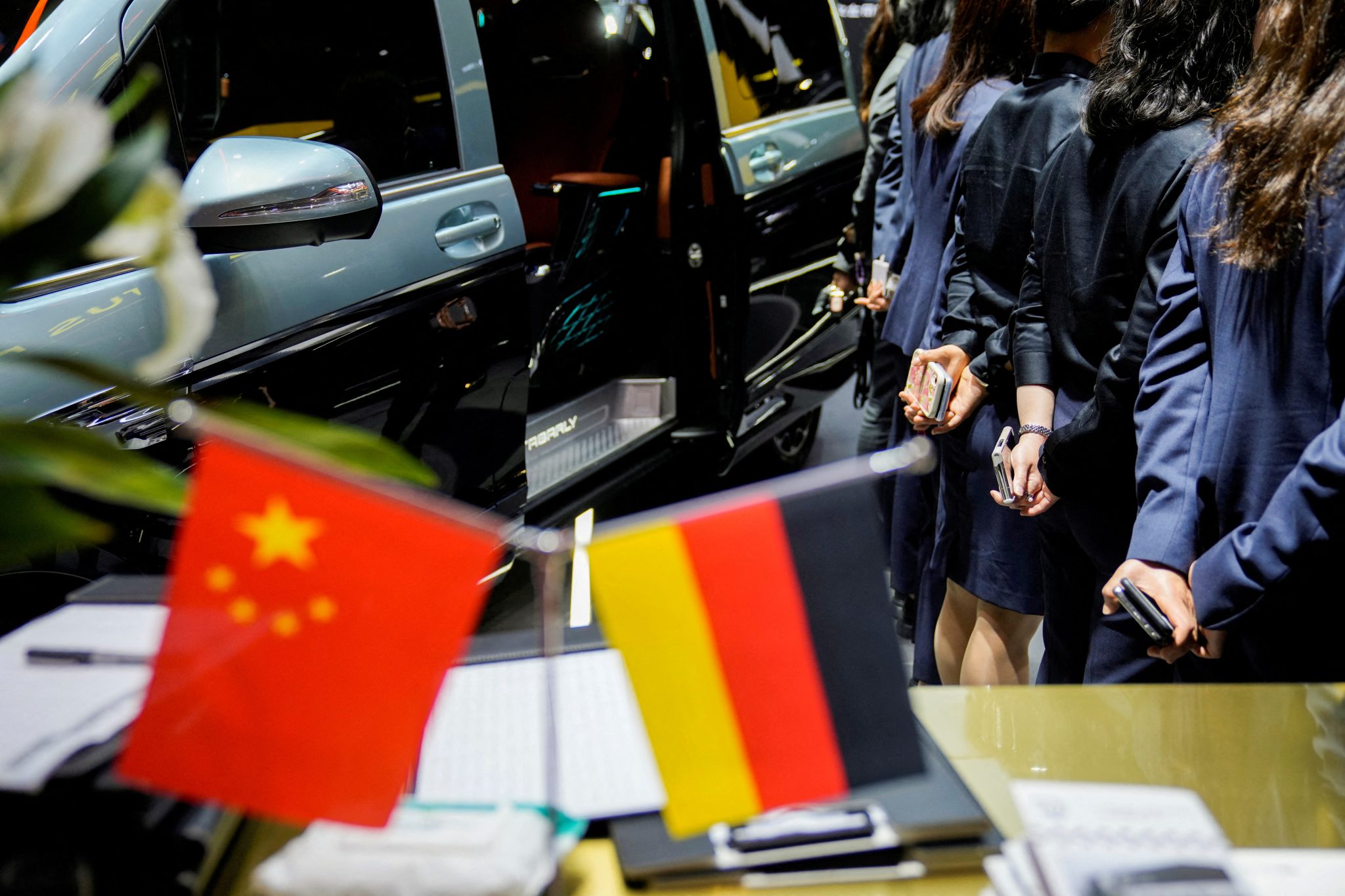Germany’s infamous auto industry is now facing what might be called an existential crisis. After decades being the manufacturing heartland of not just Germany, but all Europe; today it sits in the middle of 2 approaching storms that could wreck the industry: Rapid transition to electric mobility, escalating competition from China, faltering export demand, and the imperative to reinvent decades old industrial models. This article covers the existential threats that have the German auto industry in a chokehold and offers recommendations on how the industry can survive past 2035.

Alarm Bells
In August 2025, the monthly production of passenger cars in Germany plunged by an astonishing 18.5 percent compared to July, in one of the sharpest downturns since the 2008 financial crisis. Industry exports fell nearly 24% that same month, a horrifying figure for the German government as this sharp turn immediately reflects on the total production figures of the country amid the already difficult global trade situation. For context, total industrial production fell by 4.3% that month. The numbers are stark: production levels are being compared with those of 2005, a sobering sign for an industry once synonymous with growth.
What is causing this crisis?
Well, it’s several factors actually:
First: The regulatory clock is ticking. The European Union (EU) has committed to banning the sale of new combustion engine cars by 2035. With the German auto industry still prioritising internal engine car production, massive fear is growing that the industry is not going to be able to make the transition fast enough; and even if they do it may already be too late.
Second: The rise of the Chinese electric vehicles has taken the world by storm over the past 5 years, they are no longer the niche choice, they are the market leaders and they set rules. They are aggressively advancing, often with lower costs, high-volume manufacturing, and increasingly premium features. In 2025 Chinese EV market share in Europe rose up to 7.6 percent up from 0.5 percent in 2019, a tremendous leap in just 6 years. That encroachment isn’t just abroad it threatens the German home market itself.
Third: Germany’s export-orientation becomes a vulnerability in volatile times, and we are definitely going through those times now. With weakening demand in major markets (e.g.,China,U.S.) and amid trade frictions including historic tariffs applied by the U.S., German manufacturers are exposed. For example, U.S. tariffs and declining U.S. demand have been cited among the reasons for the auto-sector slump, with Volkswagen announcing a 1.5 billion USD revenue drop because of tariffs.
Fourth: Job cuts and capacity issues underscore deeper structural weakness. The German auto sector alone cut more than 51,000 jobs in a year to mid-2025 about 6.7 percent of its workforce, Moreover, Bosch announced the planned layoff of 13,000 employees over the next 5 years. The supply-chain ripple effects across Germany’s industrial heartland are profound.
What to do now?
Faced with these headwinds, German car manufacturers and their supply networks have little choice but to pivot. Here are the critical dimensions of that pivot:
1 Accelerating EV readiness: German car manufacturers must shift dramatically toward battery electric vehicle platforms, high performance software, autonomous driving technologies and new mobility services. Remaining reliant on ICE architecture is simply not viable long-term.
2 Diversifying markets and export risk: Over-reliance on a few geographies is risky, and luckily for German car brands they boost immense global popularity; especially in markets where there is no planned ban on combustion engine vehicles. German manufacturers must look beyond China and the U.S. towards emerging markets, regional expansion, and other growth regions (MENA, India, Africa, Latin America) to broaden their base.
3 Supply Chain Realignment: Production must be closer to growth markets. Battery gigafactories and localized manufacturing ecosystems (especially within Europe) are crucial to reduce dependencies on non-EU supply chains which are already flagged as a vulnerability.
4 Leveraging brand premium and value added service: The German strength has been in premium cars Mercedes, BMW, Audi, Porsche. In an EV world, this brand cachet persists but German firms must embed it in connected software, luxury EVs and mobility offers rather than merely islands of ICE heritage. For now at least, these manufacturers still do know how to make cars that provide excitement and pleasure, this must be their selling point once they switch to the EV market.
5 New Business Model: Car manufacturers are increasingly becoming mobility providers: subscription models, fleet services, integrated digital mobility ecosystems. For German firms, combining engineering excellence with software and services can open new profit fronts.
6 Use influence for policy alignment: The scale of investment required (battery plants, R&D, software ecosystems) exceeds what any single OEM can easily carry. Partnerships, alliances, and supportive industrial policy (from Germany & the EU) will matter. Furthermore, with the USA reshaping the world trade order it will not be unthinkable to see the EU applying tariffs on Chinese EV.
The pivotal question is: can the German auto industry execute this pivot in time? The timeframe is tight. Some analysts argue that if German manufacturers do not catch up with Chinese EV capabilities and cost structures, the industry risks being overtaken within a decade.
Yet there are reasons for cautious optimism: Germany retains deep industrial know-how, world-class engineering talent, strong brands, and a robust supplier ecosystem. With decisive action, it still has the potential to become highly competitive in the next mobility era but doing nothing or moving too slowly risks irrelevance.
A Decade To Reinvent Or Disappear
Germany’s automotive industry is at a crossroads with red warning lights flashing, a warning not to be taken lightly by Germany as it could lose one of the main pillars of its economy within 10 years. The Myth of German car superiority is challenged like never before, and could be facing its final reckoning. Yet, history shows that Germany’s strength has always lain in its capacity to adapt, innovate, and lead when the pressure is greatest. The next ten years will decide whether the “Made in Germany” badge still stands for progress or becomes a relic of the combustion era.
If German carmakers seize this disruption as their next renaissance, they can once again define the global standard for mobility. If they hesitate, they may watch their legacy fade in the rearview mirror of faster, smarter competitors. The race is on, and time is running out.



